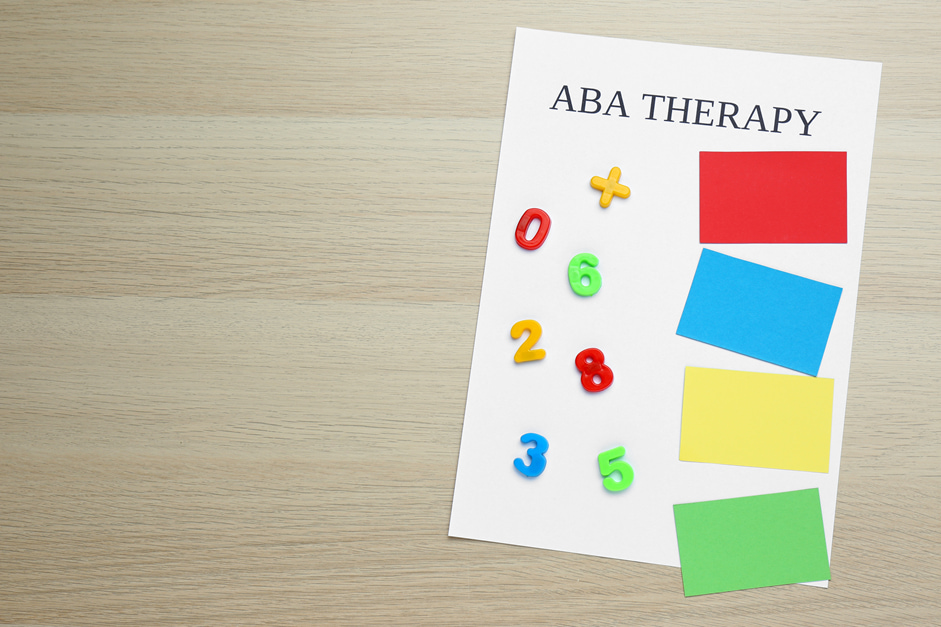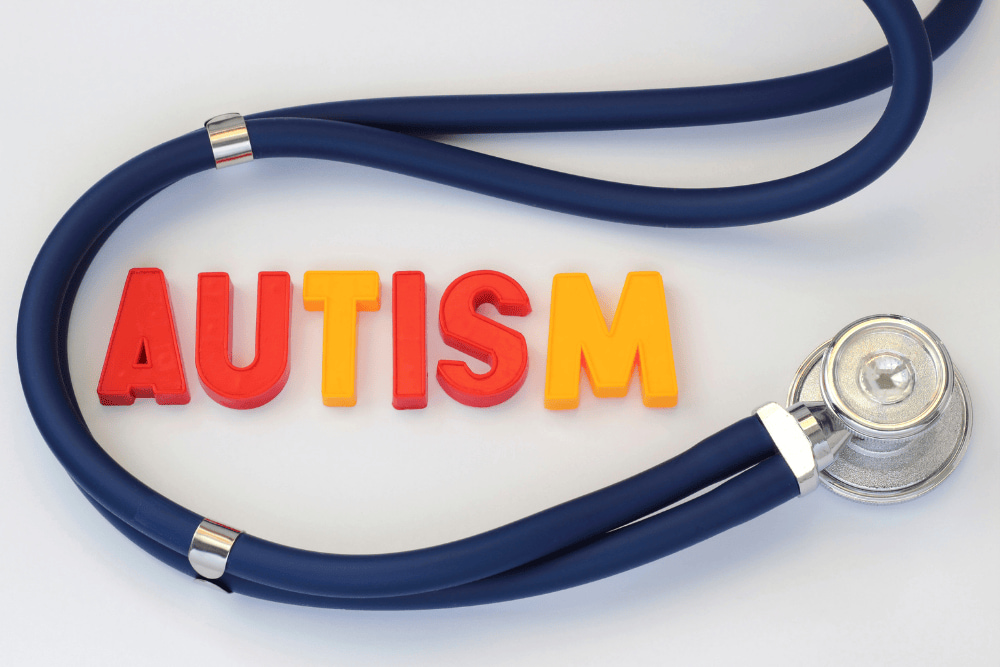Understanding the SPELL Autism Framework
The SPELL Autism Framework is a comprehensive approach designed to support individuals with autism in their everyday lives. By understanding this framework's key components and principles, one can gain valuable insights into how to help improve the overall quality of life of autistic individuals. Read on to discover more in this introduction to autism and the SPELL framework from Above and Beyond Therapy, experienced and qualified ABA providers.
Key Takeaways
- What is the SPELL Autism Framework?
- Why is the SPELL approach important?
- SPELL therapy components
- Benefits of incorporating the SPELL principle
- How to implement the SPELL Framework
- Success stories: using the SPELL autism approach in real-life
- FAQs

What is the SPELL Autism Framework?
The SPELL Autism Framework is a structured approach for supporting individuals with autism. It stands for Structure, Positive approaches and expectations, Empathy, Low arousal, and Links. SPELL emphasizes consistency, calm environments, and positive relationships to improve communication, reduce anxiety, and promote well-being.
The National Autistic Society UK developed it as a person-centered approach to help individuals with autism better navigate the challenges they may face in various settings.
Why Is the SPELL Approach Important in Autism?
The SPELL framework for autism serves several important purposes. Firstly, it offers a structured, consistent approach to supporting individuals with autism, promoting predictability and security, key for those who thrive on routine. It focuses on strengths-based, positive strategies that empower autistic individuals and foster inclusivity.
A core element of the framework is empathy — understanding the unique experiences of people on the spectrum to build a supportive and compassionate environment. It also incorporates a low-arousal approach, minimizing sensory overload and distractions to create calm, supportive environments that enhance learning and well-being.
For caregivers, educators, and professionals, applying the SPELL principles helps create conditions that support growth, independence, and boost quality of life for individuals with autism.
SPELL Autism Components
The SPELL Autism Framework is comprised of the following key components:
- Structure
- Positive approaches
- Empathy
- Low arousal
- Links
Read on as we unpack each component.
Structure
Structure involves creating a predictable and organized environment to provide individuals with autism a sense of stability and comfort. This can be achieved through consistent routines, clear expectations, and visual supports such as schedules or visual cues. By establishing a structured environment, individuals with autism can better understand and navigate their surroundings, leading to increased feelings of security and reduced anxiety.

Positive Approaches
Positive approaches promote positive behavior and communication by emphasizing strengths and reinforcing desired behaviors. By using positive reinforcement techniques, such as praise, rewards, or visual supports, individuals with autism are encouraged to engage in appropriate behaviors and develop essential skills. Positive approaches foster a supportive and encouraging environment that empowers individuals with autism to thrive and reach their full potential.
Empathy
Empathy involves understanding and sharing the emotions and experiences of individuals with autism. It plays a crucial role in the SPELL Autism Framework. Practicing empathy enables caregivers, educators, and support professionals to develop a deeper connection, build trust, provide tailored support, and create an inclusive environment that respects the individuality of those with autism.
Low Arousal
Low arousal refers to minimizing excessive sensory stimulation to provide a calm and peaceful environment for individuals with autism to help them manage sensory sensitivities and avoid sensory overload. People with autism often suffer from SPDs (sensory processing differences) and can be hypersensitive to sensory stimuli. A low-arousal environment is a sensory-friendly space that promotes relaxation, reduces anxiety, and enhances the overall well-being of individuals with autism.
Links
The Links element of the SPELL Autism Framework emphasizes the importance of strong, collaborative relationships between everyone involved in the support of an individual with autism. This includes family members, teachers, therapists, and the individuals themselves. Effective communication and partnership ensure consistency, helping to reinforce strategies and provide a unified approach to care. This supports stability, reduces anxiety, and promotes a more cohesive and person-centered support system.
Benefits of SPELL for Autistic Individuals
Incorporating the SPELL Autism principles promotes a holistic and effective approach to autism support. Below, we’ll explore some of the key benefits of implementing this framework.
Enhancing Communication and Social Skills
One of the primary benefits of using SPELL in therapy, school, and at home is its focus on enhancing communication and social skills for individuals with autism. By providing a structured and predictable environment, individuals develop a sense of security and comfort. This, in turn, encourages better communication, social interaction, and the development of essential social skills.

Through the use of visual supports, social stories, and clear communication strategies, individuals with autism can better understand and engage in social situations. The framework encourages active listening, turn-taking, and the recognition of non-verbal cues, enabling individuals to navigate social interactions more effectively. As a result, individuals with autism can build meaningful relationships and develop stronger communication skills.
Promoting Independence and Autonomy
Another significant benefit of the SPELL Autism Framework is its emphasis on encouraging independence and autonomy. The SPELL approach promotes the development of essential life skills, such as self-care, decision-making, and problem-solving. By breaking tasks into manageable steps and utilizing visual supports, individuals with autism can develop the necessary skills to accomplish tasks independently. This fosters a sense of self-confidence and self-esteem, and empowers individuals with autism to take ownership of their daily routines and activities.
Reducing Anxiety and Challenging Behaviors
The SPELL framework for autism recognizes that individuals may experience anxiety and exhibit challenging behaviors when faced with overwhelming situations. By incorporating low-arousal strategies and creating environments that minimize sensory overload, the framework helps reduce anxiety and promote emotional well-being.
The structured nature of the framework provides predictability, which can be calming for individuals with autism. By implementing clear routines, consistent expectations, and utilizing sensory-friendly environments, individuals are less likely to experience sensory overload and are better equipped to manage their emotions. This, in turn, reduces challenging behaviors in a positive manner.
The benefits of the SPELL principles extend beyond those listed above, helping individuals with autism thrive and lead fulfilling lives.
Implementing the SPELL Therapy Autism Approach
To effectively implement the SPELL Autism Framework, a number of factors need to be taken into account, including:
- training and education
- collaboration and support
- an individualized approach
Training and Education
Training and education play a crucial role in equipping professionals and caregivers with the knowledge and skills necessary to implement the framework effectively. Training programs and workshops provide valuable insights into the core concepts of the SPELL Autism Framework, including practical application. Additionally, parents of children who receive in-home ABA therapy are encouraged to watch and participate in sessions to learn skills, such as the SPELL principles.
Collaboration and Support
Collaboration and support are essential in creating a supportive environment that promotes the successful implementation of the framework. Effective communication and teamwork among all involved parties, including the individuals with autism themselves, help ensure consistency in the application of SPELL principles and strategies. Regular meetings, consultations, and shared decision-making processes enable the exchange of ideas and experiences, fostering a cohesive approach to supporting individuals with autism.
Individualized Approach
SPELL Autism emphasizes the importance of tailoring support to meet the unique needs of each individual. An individualized approach recognizes that no two individuals are alike, and strategies must be adapted to address specific strengths, challenges, and preferences. By taking into account the individual's communication style, sensory sensitivities, and personal goals, professionals and caregivers can create an environment that maximizes learning opportunities and promotes well-being.
By embracing training and education, fostering collaboration and support, and implementing an individualized approach, professionals and caregivers can effectively implement the SPELL Autism Framework and create an environment that supports individuals with autism in reaching their full potential.
The SPELL Autism Framework in Action: Success Stories and Testimonials
The SPELL Autism Framework has shown tremendous promise in supporting individuals with autism and promoting their overall well-being. Let's take a closer look at some real-life examples of using SPELL Autism and the positive outcomes it has achieved for individuals with autism.
How Emily Learnt to Communicate Better
Emily, a young girl with autism, struggled with communication and social skills. Through the use of the SPELL Autism Framework, Emily's support team created a structured environment that provided clear routines and expectations. With the implementation of positive approaches, they focused on reinforcing desired behaviors and promoting social engagement. By practicing empathy and understanding Emily's unique needs, her support team was able to create a low-arousal environment that reduced anxiety and facilitated her learning and development.
As a result, Emily's communication and social skills improved significantly, leading to increased confidence and a greater sense of belonging.
How Andrew Gained Independence
Andrew, a teenager with autism, found daily living skills difficult and displayed challenging behaviors. Using the SPELL approach, Andrew's support team implemented a structured routine that allowed him to develop a greater sense of predictability and control. Positive approaches were used to reinforce desired behaviors and provide appropriate support when challenges arose. The team's empathy and understanding of Andrew's needs helped create a low-arousal environment that reduced anxiety and meltdowns.
As a result, Andrew gained greater independence in various daily living skills, such as cooking, cleaning, and personal hygiene. His challenging behaviors decreased significantly, leading to improved overall well-being.

Implement SPELL Autism to Empower Success
The SPELL Autism Framework is a comprehensive approach to autism support that offers numerous benefits to individuals with autism. Through the implementation of structured environments, positive approaches, empathy, low arousal, and links, individuals can enhance their communication and social skills, gain greater independence and autonomy, and reduce anxiety and challenging behaviors.
At Above and Beyond Therapy, we believe every child with autism has the potential to succeed, and we use whatever approach it takes to help them thrive. Contact us to discover how we can set your child on the path to success today.
FAQs About Using SPELL Autism
1. How does each part of the SPELL framework support autistic people?
Each element of SPELL plays a specific role:
- Structure provides routine and predictability.
- Positive approaches focus on strengths and clear expectations.
- Empathy emphasizes understanding the autistic perspective.
- Low arousal ensures calm, non-threatening environments.
- Links promote teamwork between all members of the support team to create a supportive, person-centered environment.
2. Is the SPELL framework used in schools or therapy for autism?
Yes, the SPELL framework is used in educational settings, care environments, and therapeutic approaches to autism. Schools and support services apply SPELL to design inclusive classrooms, behavior strategies, and communication techniques tailored to autistic students’ needs.
3. What makes the SPELL framework different from other autism support models?
The SPELL framework stands out for its holistic and empathetic approach. Unlike models focusing primarily on behavior modification, SPELL emphasizes understanding, emotional safety, and collaboration. It’s also flexible, allowing personalization for each autistic individual based on their unique nature, needs, and challenges.


.jpg)





.png)



